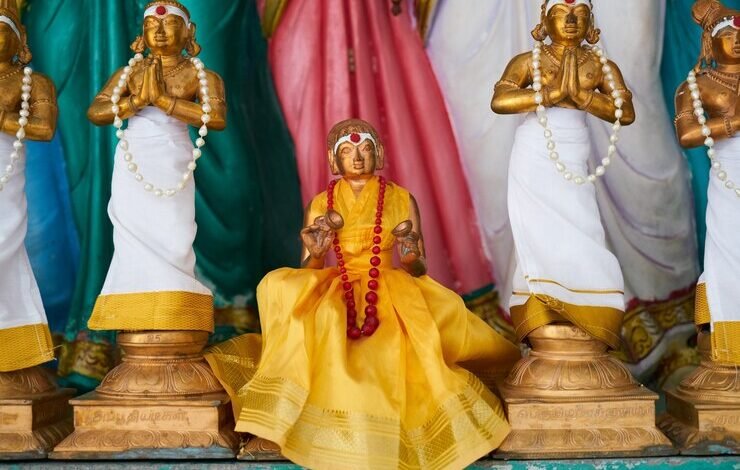imagesize:地藏王菩薩 1920×1080

Bodhisattva Ksitigarbha imagesize:地藏王菩薩 1920×1080 holds a revered position in Buddhist culture, symbolizing compassion, guidance, and hope. Known for the vow to not attain Buddhahood until all beings in hell are liberated, the Bodhisattva embodies the highest ideals of selflessness and service. Across Mahayana and East Asian Buddhism, Ksitigarbha’s influence extends into daily spiritual practices, cultural depictions, and moral teachings.
This blog explores the origins, symbolism, role, and impact of Bodhisattva Ksitigarbha, offering a comprehensive guide for anyone interested in Buddhism, spirituality, or cultural history.
The Origins and Significance of Bodhisattva Ksitigarbha
Historical Background in Buddhist Scriptures
Bodhisattva Ksitigarbha’s roots can be traced to early Mahayana Buddhist texts, with prominent mentions in the Ksitigarbha Bodhisattva Pūrvapraṇidhāna Sūtra (地藏菩薩本願經). According to the sutras, Ksitigarbha made a profound vow to guide and liberate sentient beings from suffering, particularly those trapped in hell realms.
This act of boundless compassion made Ksitigarbha a prominent figure in Mahayana traditions, with a central role in East Asian Buddhism. The Bodhisattva’s name, “Ksitigarbha,” translates to “Earth Treasury” or “Storehouse of the Earth,” symbolizing steadfastness and endless compassion.
Significance in Mahayana and East Asian Buddhism
Ksitigarbha is especially venerated in Chinese, Japanese, and Korean Buddhist traditions. Known as “Jizo” in Japan and “Jijang” in Korea, the Bodhisattva is celebrated as a protector of the deceased, children, and travelers. Devotees often seek Ksitigarbha’s blessings for comfort in times of suffering and guidance for loved ones in the afterlife.
Through its teachings, Ksitigarbha inspires a commitment to selfless service and unshakable empathy, becoming a moral compass for practitioners.
The Iconography of Bodhisattva Ksitigarbha
Traditional Appearance
Bodhisattva Ksitigarbha features a distinctive and profound iconography. The Bodhisattva is often depicted as a serene figure with a shaved head, resembling a Buddhist monk. This humble aesthetic emphasizes detachment from material possessions and devotion to spiritual purity.
Ksitigarbha is frequently shown holding a khakkhara staff, used to signify the opening of hell gates to rescue souls, and a wish-fulfilling jewel (cintamani), representing wisdom and enlightenment.
Symbolism of Features and Attire
- Shaved Head: Signifies renunciation and humility.
- Khakkhara Staff (錫杖): Represents compassionate guidance, often depicted jangling to declare the Bodhisattva’s arrival in the hell realms.
- Cintamani Jewel (如意寶珠): Symbolizes the radiance of wisdom, dispelling darkness and ignorance.
- Monastic Robes (袈裟): Reflect a life dedicated to discipline and altruism.
These features serve as visual narratives of Ksitigarbha’s virtues and mission, reinforcing their spiritual role.
The Role of Bodhisattva Ksitigarbha in Buddhism
Protector of the Deceased and Children
One of Ksitigarbha’s most profound roles is as a protector and guide for souls in the afterlife. According to Buddhist teachings, Ksitigarbha helps beings transiting through the six realms of existence, especially those suffering in hell. Parents often pray to Ksitigarbha for the health, safety, and spiritual growth of their children, making the Bodhisattva an integral part of family life in Buddhist communities.
The Bodhisattva’s Great Vow
Ksitigarbha’s vow is one of the most inspirational declarations in Buddhism. The Bodhisattva pledges to remain in samsara (the cycle of birth, death, and rebirth) until all beings are freed from suffering. This extraordinary commitment underscores the Bodhisattva ideal of putting others’ welfare above personal enlightenment.
The vow serves as a powerful reminder of compassion, perseverance, and the ability to find meaning through selflessness.
Worship and Practices Associated with Bodhisattva Ksitigarbha

Common Rituals and Practices
Bodhisattva Ksitigarbha imagesize:地藏王菩薩 1920×1080
Many devotees recite the Ksitigarbha Bodhisattva Pūrvapraṇidhāna Sūtra, believing its words can help alleviate the suffering of deceased loved ones.
The 29th day of the 7th lunar month, known as Ksitigarbha Bodhisattva Day, marks special observances, including temple visits, merit rituals, and vegetarian offerings.
Daily Buddhist Worship
For everyday practitioners, dedicating mantra recitations like “Om Ksitigarbha Bodhisattva Svaha” is a common way to connect with the Bodhisattva’s energy. Placing images or statues of Ksitigarbha at home altars is also customary, allowing families to express gratitude and seek blessings regularly.
These practices deepen the connection between devotees and the Bodhisattva’s teachings, fostering spiritual growth.
Bodhisattva Ksitigarbha’s Influence Beyond Buddhism
Influence in Art, Culture, and Community
Bodhisattva Ksitigarbha has inspired countless works of art, ranging from intricate temple sculptures to serene ink paintings. The gentle visage of Ksitigarbha has become a symbol of compassion and hope, often used to evoke spiritual calmness.
Culturally, Ksitigarbha’s teachings influence community values, emphasizing charity, kindness, and mindfulness. Contemporary Relevance
Ksitigarbha’s message of compassion remains deeply relevant in modern society, resonating in the ongoing quest for empathy and justice. The Bodhisattva inspires not only spiritual practices but also altruistic initiatives, as communities strive to alleviate suffering in the world.
Whether through community service, environmental awareness, or humanitarian efforts, the spirit of Ksitigarbha lives on.
Discover the Timeless Wisdom of Bodhisattva Ksitigarbha
Through their enduring vow, symbolic iconography, and role as a protector, Bodhisattva Ksitigarbha remains a beacon of compassion in Buddhist teachings. From delicate art to profound spiritual practices, Ksitigarbha’s influence transcends generations and continues to inspire.
If you’re curious about further exploring Ksitigarbha’s teachings, consider visiting a local Buddhist temple or joining an online meditation group. We also welcome you to share your thoughts on Ksitigarbha’s legacy in the comments below.
One lesson is certain—Ksitigarbha exemplifies the incredible potential of compassion to transform lives across time and space.




